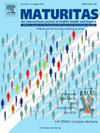智能手机急性后护理模型降低全因死亡率与改善左心室射血分数住院心力衰竭患者在台湾
IF 3.6
2区 医学
Q2 GERIATRICS & GERONTOLOGY
引用次数: 0
摘要
目的:本研究探讨智能手机应用程序的使用对心衰患者急性期后护理结果的影响。方法对因心力衰竭住院后接受急性期护理的患者进行倾向评分匹配分析。这个智能手机应用程序包括即时反馈、推荐和一个知识平台。我们评估了急性护理前后的七个变量:左心室射血分数、明尼苏达州心力衰竭生活问卷、迷你营养评估-简短形式、日常生活工具活动、简短症状评定量表-5、6分钟步行测试和欧洲生活质量5维度问卷的得分。用受者工作特征曲线评价功能进展剂量效应。应用程序用户和非用户进行匹配,以尽量减少混杂变量的影响,包括年龄、性别和教育程度。Cox比例风险模型和亚分布风险法评估了智能手机应用对出院后预后的影响。结果2018 - 2023年共纳入493例患者,平均年龄65.4±15.1岁。在平均2.35年的随访中,结果表明,每增加一个功能改善单位,总死亡率降低38%,再入院或急诊室就诊减少23%,心血管死亡风险降低36%。在119对配对配对中,应用程序使用者的死亡风险显著低于非使用者,左心室射血分数显著高于非使用者。Kaplan-Meier曲线显示,左室射血分数改善的应用程序使用者具有最佳的生存结果,其次是左室射血分数改善的非应用程序使用者,左室射血分数未改善的应用程序使用者和未改善左室射血分数的非应用程序使用者(P <;0.001)。结论智能手机应用程序可以通过提高左心室射血分数和降低死亡率来增强心力衰竭患者的过渡性护理。本文章由计算机程序翻译,如有差异,请以英文原文为准。
A smartphone model for post-acute care decreases all-cause mortality with improved left ventricular ejection fraction in patients hospitalized with heart failure in Taiwan
Objectives
This study investigates the impact of the use of a smartphone application on outcomes for patients with heart failure receiving post-acute care.
Methods
We employed a propensity score-matched analysis of patients who underwent post-acute care following hospitalization for heart failure. The smartphone application consisted of immediate feedback, recommendations, and a knowledge platform. We assessed seven variables before and after post-acute care: left ventricular ejection fraction, and scores on the Minnesota Living with Heart Failure Questionnaire, Mini-Nutritional Assessment–Short Form, Instrumental Activities of Daily Living, Brief Symptom Rating Scale-5, 6-minute walk test, and European Quality of Life-5 Dimensions Questionnaire. The functional progression dose effect was evaluated using receiver operating characteristic curves. Application users and non-users were matched to minimize the impacts of confounding variables, including age, gender, and education. The Cox proportional hazards model and the sub-distribution hazard method assessed the impact of the smartphone application on post-discharge outcomes.
Results
From 2018 to 2023, 493 patients (average age 65.4 ± 15.1 years) participated in the study. Over an average follow-up of 2.35 years, the results indicated that each additional unit of functional improvement was associated with a 38 % reduction in overall mortality, a 23 % decrease in readmissions or emergency room visits, and a 36 % lower risk of cardiovascular mortality. Among 119 matched pairs, application users demonstrated significantly lower mortality risk and better left ventricular ejection fraction than non-users. Kaplan-Meier curves showed that application users with improved left ventricular ejection fraction had the best survival outcomes, followed by non-application users with improved left ventricular ejection fraction, application users without improved left ventricular ejection fraction, and non-application users without improved left ventricular ejection fraction (P < 0.001).
Conclusions
The findings suggest that smartphone applications could enhance transitional care for patients with heart failure by improving left ventricular ejection fraction and reducing mortality.
求助全文
通过发布文献求助,成功后即可免费获取论文全文。
去求助
来源期刊

Maturitas
医学-妇产科学
CiteScore
9.10
自引率
2.00%
发文量
142
审稿时长
40 days
期刊介绍:
Maturitas is an international multidisciplinary peer reviewed scientific journal of midlife health and beyond publishing original research, reviews, consensus statements and guidelines, and mini-reviews. The journal provides a forum for all aspects of postreproductive health in both genders ranging from basic science to health and social care.
Topic areas include:• Aging• Alternative and Complementary medicines• Arthritis and Bone Health• Cancer• Cardiovascular Health• Cognitive and Physical Functioning• Epidemiology, health and social care• Gynecology/ Reproductive Endocrinology• Nutrition/ Obesity Diabetes/ Metabolic Syndrome• Menopause, Ovarian Aging• Mental Health• Pharmacology• Sexuality• Quality of Life
 求助内容:
求助内容: 应助结果提醒方式:
应助结果提醒方式:


